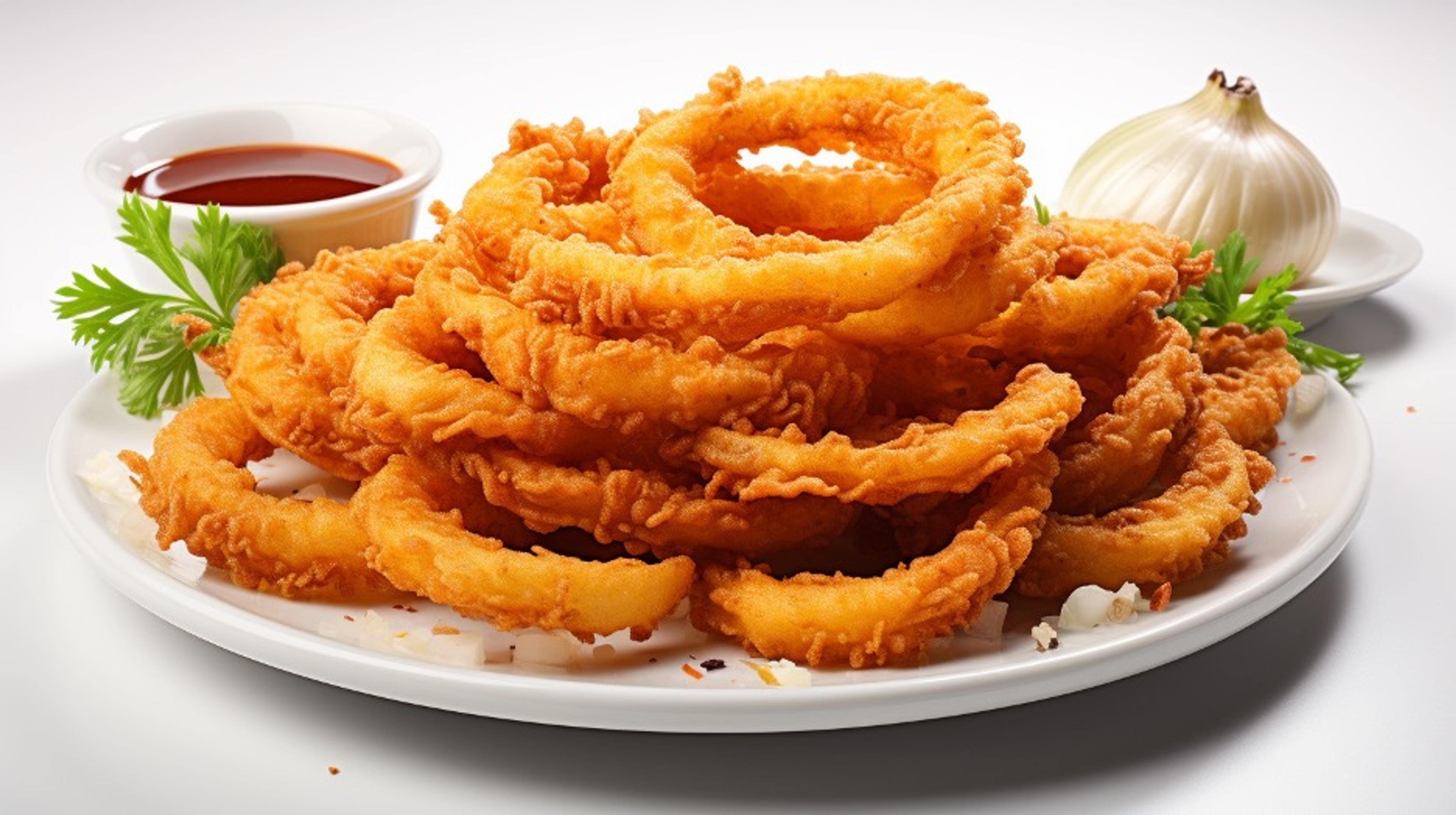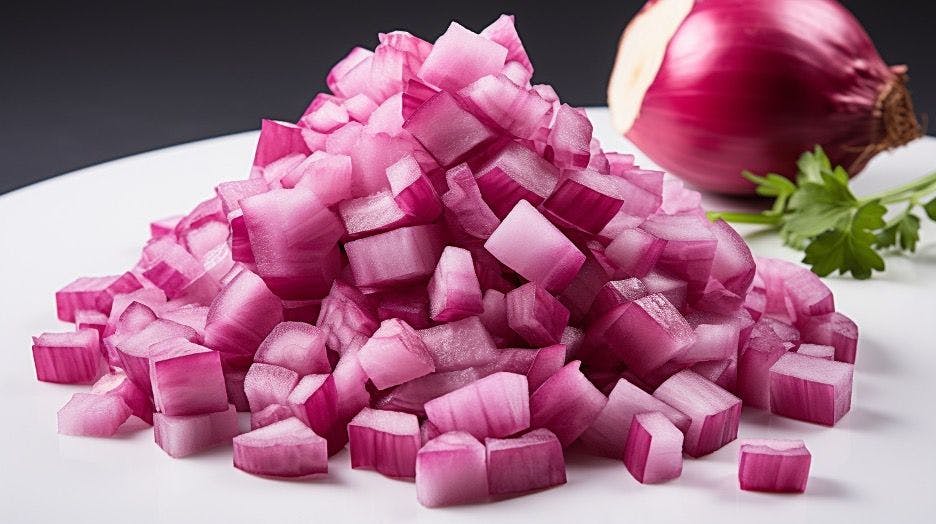Onions are a staple in kitchens around the world. Their distinct flavor and versatility make them a go-to ingredient in a plethora of dishes, from hearty stews to refreshing salads. Yet, for many home cooks, knowing how to properly cut an onion remains a mystery. Different recipes require different types of onion cuts, and the method you choose can impact both the dish’s flavor and its presentation. In this article, we’ll delve into the various onion cut types and include a dedicated guide on how to cut onion into rings and strips, so you can master the art of onion preparation.
1. Dice
A diced onion is perhaps the most common cut you’ll encounter in recipes. It involves cutting the onion into small, cube-like pieces. It’s perfect for sautés, stir-fries, and any dish where you want the onion to blend seamlessly with other ingredients.
How to do it:
- Halve the onion from root to tip, peel it, then make vertical cuts without cutting through the root.
- Make horizontal slices, then chop down to create even cubes.
2. Mince
Mincing creates even smaller pieces than dicing. This cut is ideal for dishes where you want the onion’s flavor without the chunky texture, like in sauces or salsas.
How to do it:
- Use the same initial method as dicing.
- Continue to chop until the pieces are finely minced.
3. Julienne (or “matchstick”)
This cut results in thin, elongated pieces of onion. It’s often used for garnishes or dishes like stir-fries where quick cooking is essential.
How to do it:
- Halve and peel the onion.
- Slice off one end, then make angled cuts into the onion, creating thin strips.
4. Rings and Strips
Onion rings are a favorite in many cultures, whether deep-fried, sautéed, or used fresh in salads. Strips, on the other hand, are perfect for fajitas or as toppings on burgers and sandwiches.
How to do it: For a detailed guide on this particular cut, refer to this dedicated tutorial on how to cut onion into rings and strips.
5. Chop

A chopped onion doesn’t have the precision of dicing. The pieces are roughly the same size but can be a bit irregular. It’s a quicker method and works for dishes where the onion’s precise shape isn’t crucial.
How to do it:
- Halve the onion from root to tip and peel.
- Make downward cuts followed by horizontal ones to produce rough chunks.
6. Wedge or Quarter
This type of cut results in large pieces of onion, ideal for roasting, grilling, or any preparation where the onion is a focal point of the dish.
How to do it:
- Remove the ends of the onion and cut it in half.
- Each half can then be cut into 2 or 3 large wedges, depending on the onion’s size.
The Importance of Technique
The way you cut an onion can influence more than just the aesthetics of your dish. The size and shape of the onion pieces can impact how they cook and consequently, their final texture and flavor profile in the dish. Here are a few considerations:
Consistency Matters
When onions are cut uniformly, they cook evenly. This ensures that every bite offers a consistent taste and texture. For example, if you’re making a stew and some pieces of onion are larger than others, the larger chunks might remain slightly crunchy while the smaller pieces could disintegrate.
Release of Flavors
The more an onion is cut, the more its cell structures are broken down, releasing its juices and flavors. A minced onion, due to its small size, will release more juice and flavor than an onion cut into larger chunks. This is why minced onions are often used in dishes where the onion’s flavor needs to be dispersed throughout, like sauces or marinades.
Texture in the Dish
The cut of the onion can influence the texture of the dish. For example, julienne or thinly sliced onions might provide a soft, almost melt-in-the-mouth texture when sautéed, whereas diced or chopped onions would offer a more noticeable, chunkier texture.
Aesthetics and Presentation
Lastly, the visual appeal of a dish can be greatly influenced by how ingredients like onions are cut. Onion rings or wedges might be used for a rustic presentation, while finely diced onions might be suitable for a more refined dish.
Tips for Efficient Onion Cutting
- Sharp Knife: Always use a sharp knife when cutting onions. It not only makes the job easier and faster but also reduces the likelihood of accidents.
- Stable Cutting Board: Ensure your cutting board is stable. You can place a damp cloth or paper towel underneath to prevent it from slipping.
- Avoiding Tears: Onions are notorious for causing tears. To reduce this, you can chill the onion before cutting or cut near an open flame like a gas stove, which helps burn off some of the irritants.
- Safety First: Always tuck your fingers in and use your knuckles as a guide when slicing or dicing onions.
- Practice: Like any other skill, practice makes perfect. The more you cut, the more proficient and faster you’ll become.
Wrapping Up
Understanding how to cut an onion based on the requirements of your dish is a foundational culinary skill. It’s a blend of art and science, and with practice, anyone can master it. As you explore various cuisines and recipes, you’ll appreciate the role that this humble vegetable plays in elevating flavors and textures. So, the next time you pick up an onion, remember the myriad possibilities it holds and the culinary adventures it can lead you on.


Comments are closed.